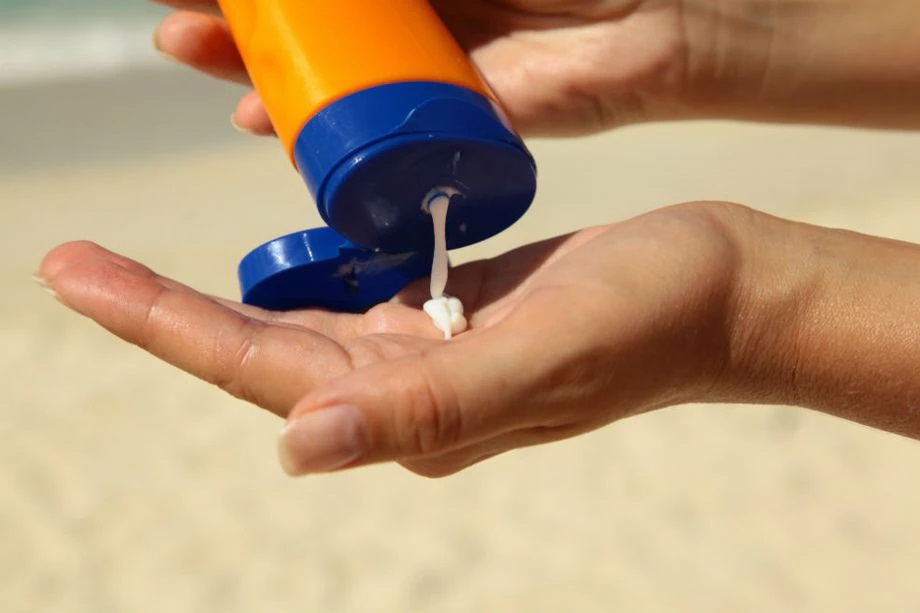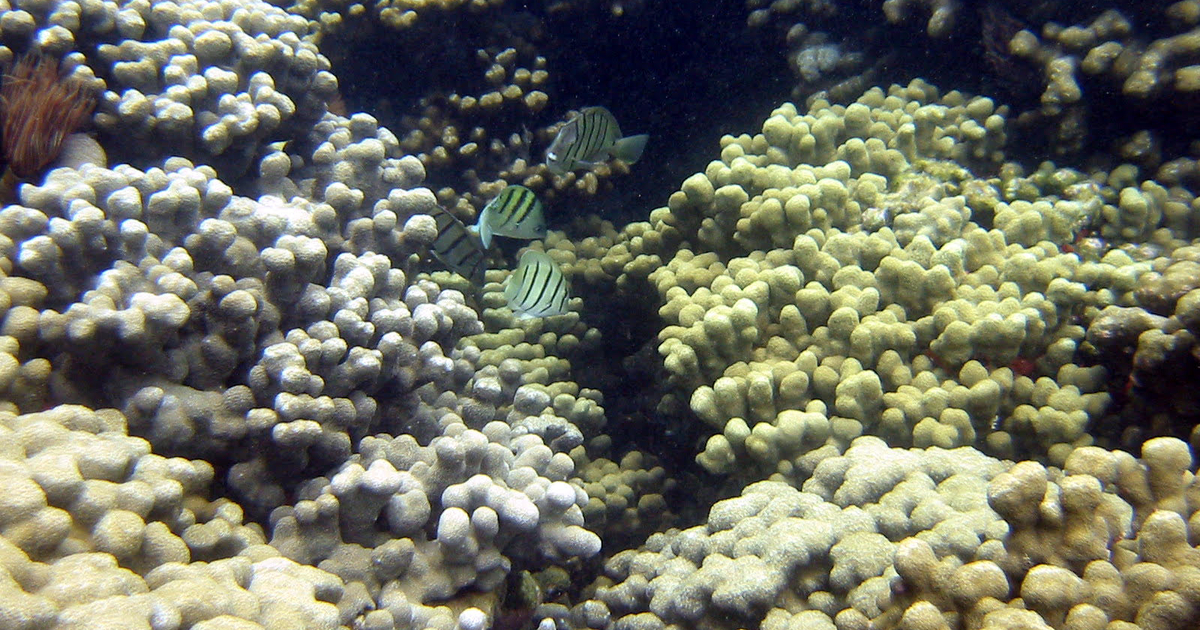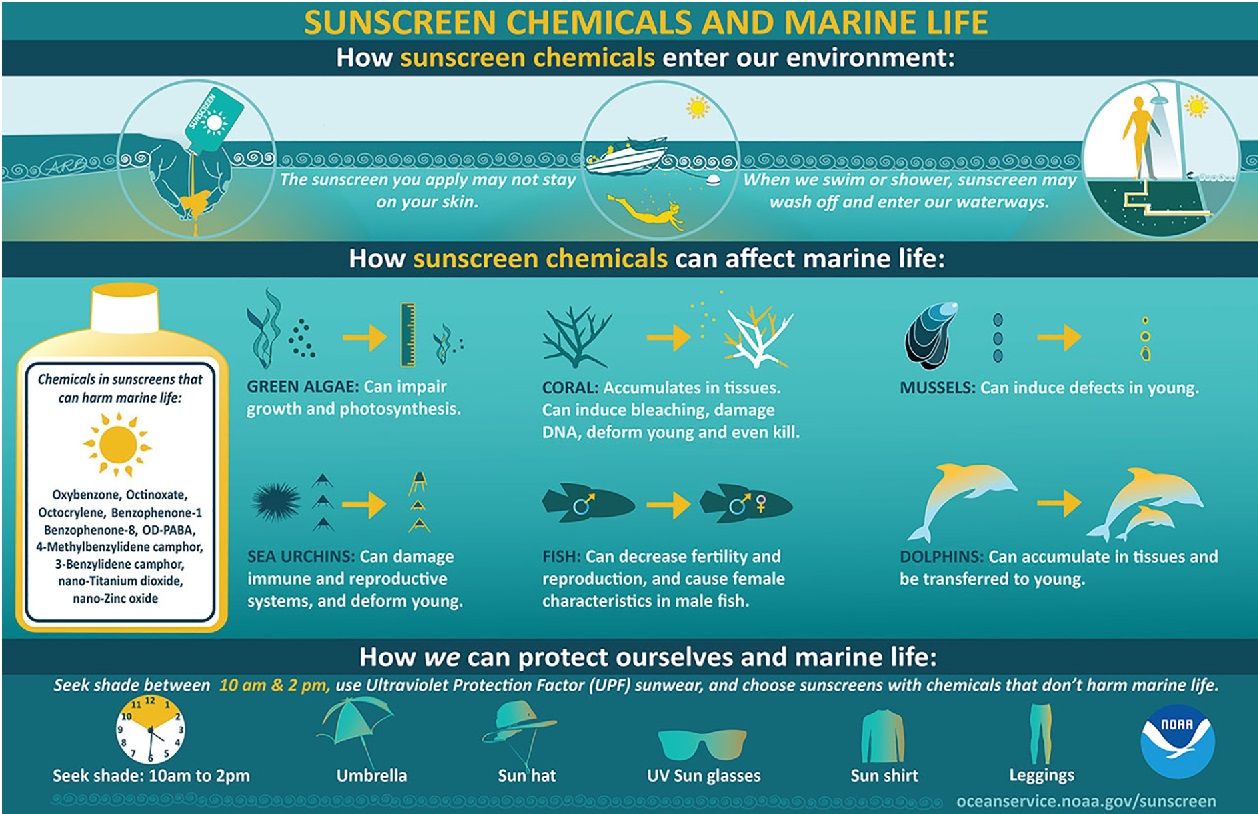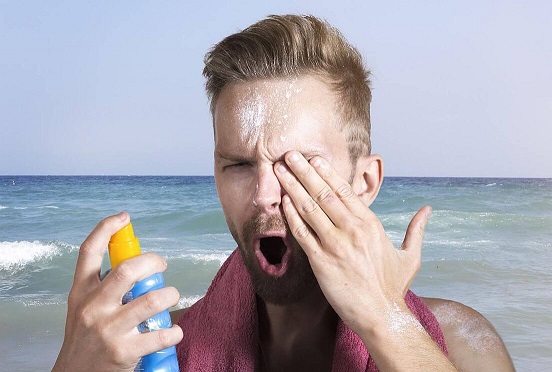My mother, (age 66), my self (42,) and my daughter (18) all went snorkeling together we had an awesome time. The guides were funny and had a lot of information. They...
In September 13, 2024
The problem is that its accumulation in marine organisms can cause different alterations, especially hormonal and reproductive. Different UV filters have been detected at different levels of the food chain, so there is a risk that they may even reach humans through food.
Therefore, despite the fact that the use of these substances is essential in our daily lives, it is necessary for society to start betting on more sustainable alternatives.

Sunscreens belong to the huge and varied group of so-called emerging pollutants, those that are not yet included in the legislation (unlike the priority substances of the Water Framework Directive). Therefore, they are not controlled or monitored.
In addition to UV filters, pharmaceuticals, hormones, drugs of abuse, personal care products or detergents are also emerging pollutants. All these products can reach the sea through the submarine outfalls that discharge the water from the treatment plants, since these do not have totally efficient mechanisms for their elimination.
As reported by institutions such as the AQUAE Foundation, the Water Water Joint Programming Initiative, the European Union and UNESCO, the presence of these contaminants in water seems to be increasing due to the increasing use of chemical substances.
Therefore, it is necessary to carry out monitoring studies in the aquatic environment. This requires specific analytical instrumentation to extract these contaminants from the water and to be able to measure them even at very low concentrations.
UV filters have a direct entry into beaches or rivers through bathers who use sunscreens. Therefore, coastal areas, especially the most touristic ones, are an environment that is quite vulnerable to this type of pollution.
In addition, they are added to a multitude of creams, hair dyes, nail paints or cosmetics. Thus, its entry into the marine environment through the effluents of the treatment plants is also very significant.
But the problem does not end there. In addition to being found in these personal care products, UV filters are also used to protect items from degradation by the sun's rays. They are added to many types of products, such as food packaging, which is why their presence in our environment is widespread.
Once in the sea, these contaminants can be very harmful to flora and fauna. Numerous studies have already verified the presence of UV filters at different levels of the trophic chain: algae, molluscs, fish or mammals.

Scientists have completed the first comprehensive assessment of UV-filters in surface seawater, sediment, and coral tissue from multiple coral reefs around Oahu, Hawaii. (University of Maryland Center for Environmental Science/Carys Mitchelmore)
Research indicates that some UV filters have even been transferred to the eggs of wild birds.
The most frequent problems that they can cause in animals are related to their ability to reproduce. They can act as endocrine disruptors, that is, interfere with the natural hormonal balance. All this, in the long run, will influence the loss of biodiversity.
Some of the most harmful UV filters are already banned in some places, such as Palau or Hawaii, due to the damage they are causing to corals, one of their main tourist attractions.
However, their global ban is more complicated due to the large number of beneficial applications they have. For this reason, the scientific community is more committed to a change in formulations, manufacturing more natural and biodegradable products.already exist on the market alternatives, they are generally not known by the population and are usually somewhat more expensive. Therefore, the next step to solve the problem is to publicize the environmental impact of conventional protectors and promote the new generation.

We have a responsibility as a society to bring about this change. The markets move by the law of supply and demand, that is, until people know about and demand these new products, the companies that manufacture sunscreens are not going to bet on the transformation. We have several examples of this.
Parabens: Years ago, virtually all personal care products included these preservatives. However, people began to be wary of these products after being associated with the appearance of cancer. Over time, it has become common to read "paraben free" on shampoos or creams. The industry adapted its offer to the existing demand.
Palm oil: When the population began to become aware of the environmental damage caused by its extraction, many food brands removed it from their recipes. It even gives them prestige at the level of advertising.
Plastics and microplastics: There are many companies that are developing all kinds of reusable products to end single-use plastic.
Behind many changes in the industry is buyer discontent and a reluctance to continue purchasing old products. The same will happen with sunscreens: when there is mass awareness among users about their harmful effects on the environment, manufacturers will step up to offer alternatives.

My mother, (age 66), my self (42,) and my daughter (18) all went snorkeling together we had an awesome time. The guides were funny and had a lot of information. They...
In September 13, 2024Luis and the other tour guide (can’t remember the name sorry) were very nice and patient with everyone. They kept checking in on everyone to make sure no one got left...
In June 06, 2024Easy to get picked up and a great time snorkeling out in Puerto Morelos! Our guide and coral...
In April 25, 2024Our tour guides - Luis and Jesus - were amazing. They were very kind, patient and great at guiding us through the reefs. They would point out large aquatic life and...
In April 11, 2024We took our family of 9 on a snorkel trip with this company and had the best time! Our guides were super friendly and you could tell they love what they...
In February 29, 2024Our guides were amazing and definitely had a great time. I would recommend this to all my family and friends....
In February 29, 2024An amazing time seeing the reef! The staff were incredibly helpful and quick to point out...
In February 23, 2024The guides were great. Good time, had by all...
In February 22, 2024I have snorkeled at many locations, and this one near Puerto Morelos y undoubtedly one of the bests. Highly recommend...
In December 08, 2023They did an excellent job of taking care of everyone when we went snorkeling....
In December 03, 2023